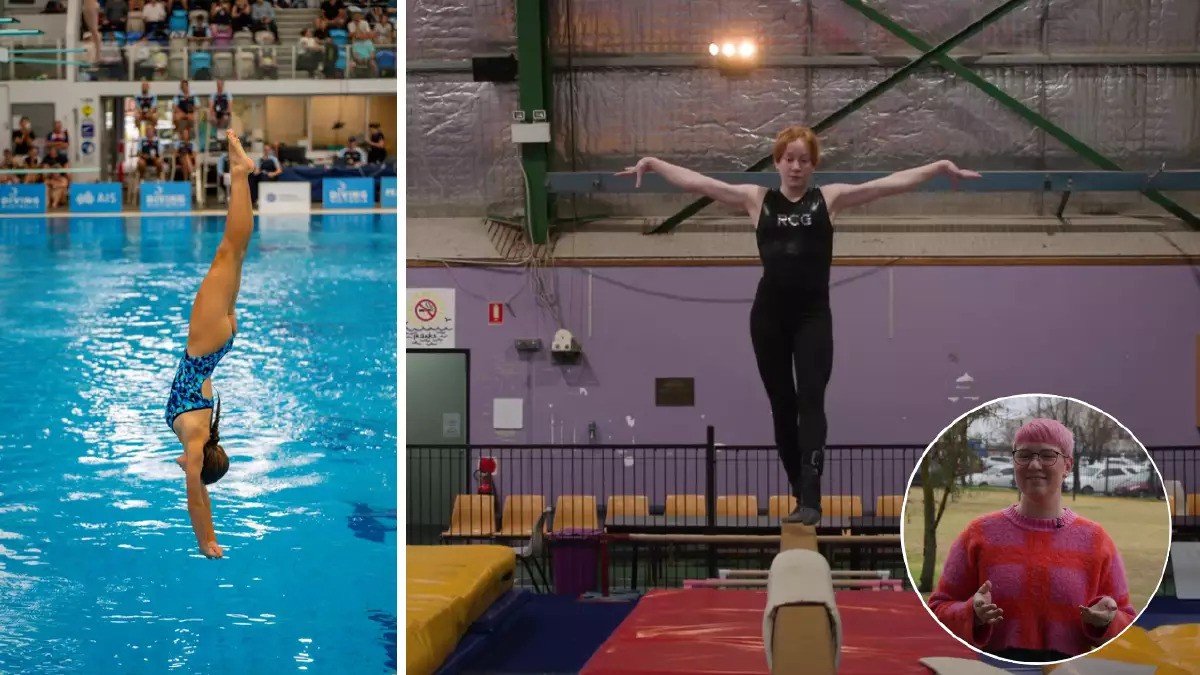Like everyone, I've started watching Biles, but what do her scores mean?
There are some sports that are just meant to be watched with dreary eyes in the dead of the night.
Gymnastics is one of them.
Others I expect to watch on a calm Sunday morning with a coffee in my hand.
Surfing perhaps.
There's something captivating about watching a sport that you've not considered much in the past four years and rooting for the athletes as though you know what they are doing.
But it's also nice to have at least somewhat of an idea what is going on.
Wagga Diving Club's Charlotte Seghers and Riverside City Gymnastic's Emma Logan.
Nearly a third of all Olympic sports are judged, with each taking on a unique scoring system.
Gymnastics (both artistic and rhythmic), skateboarding, breaking, surfing, diving, and equestrian are among the list.
There are few ways to guarantee a judged score is the "correct" score for an athlete, but there are safeguards in place.
Athletes are not judged by one individual, but a panel of professional judges.
Wagga Diving Club's Charlotte Seghers and Riverside City Gymnastic's Emma Logan.
Well regarded within their fields, these often unseen and un-thanked individuals are highly qualified and may have been adjudicating for decades.
After watching an athlete complete their routine, skill, trick, or pass, judging panels compile their scores.
Typically the highest and lowest scores are removed, and the remaining are averaged out, that average becomes the competitors score.
It's a sick simplification but for the casual viewer, that's all you need to know.
If you really like numbers though, keep reading.
A + B - C = Gymnastics scores
Watching Simone Biles fly through the air with a grin on her face during the USA team artistic gymnastics rotation was a treat.
But when teammate Jade Carey dropped from individual medal chances after a horror floor routine, it had me wondering what judges are actually looking for.
In artistic gymnastics - the one Biles competes in - nine judges are split into three groups.
Each group determines one part of a gymnast's score.
The D-panel calculates the difficulty of a routine, this is a score that begins at 0 and is accumulative.
Each skill and connection a gymnast performs is worth a set point value as assigned in the Gymnastics Bible (also known as the code of points).
D-panel judges must agree on the difficulty score before it is finalised.
The E-panel judges the execution, that is, how well a gymnast performs the skills.
This score starts at 10 and is deducted from.
All judges on the E-panel individually generate a score for each routine, the highest and lowest score are dropped with the remaining averaged out.
They are looking at both the execution of a skill and more recently, the artistry of the performance - which is why we're seeing more fluid movement between skills (and why pop music is filtering into the sport).
Neutral violations also come into account, they are automatic deductions, such as for stepping out of bounds or for not completing in time.
It's an impressively quick process for this panel who have but moments to see these athletes flying through the air.
Once they have submitted their scores there's a quick bit of sport maths (difficulty score + execution score - deductions = final score) and barely a minute after an athlete has completed their score flashes up for all to see.
Flying or falling? Either way it's diving
If scoring a routine that lasts less than 90 seconds seems fast, save a thought for diving judges.
It takes just seconds for a diver to hit the water and they need to be on their A-game.
We all know that a great dive has a small splash, but what about everything between the diver leaving the board and hitting the water.
Seven judges watch individual dives, and as previously, the two highest and lowest scores are automatically removed.
Scores are made between 1 and 10, in 0.5 intervals, with the three remaining execution scores added together.
The judges don't just look at the diver's splash though, they look also at how the diver is positioned to start the dive, their take-off from the board and how they fly through the air.
This is then multiplied by the dive's difficulty, which is determined by five diving components - somersaults, flight position, twists, approach, and unnatural entry - all the things the diver does while in the air.
Back on the sport maths train we're at execution + execution + execution x difficulty = final score.
